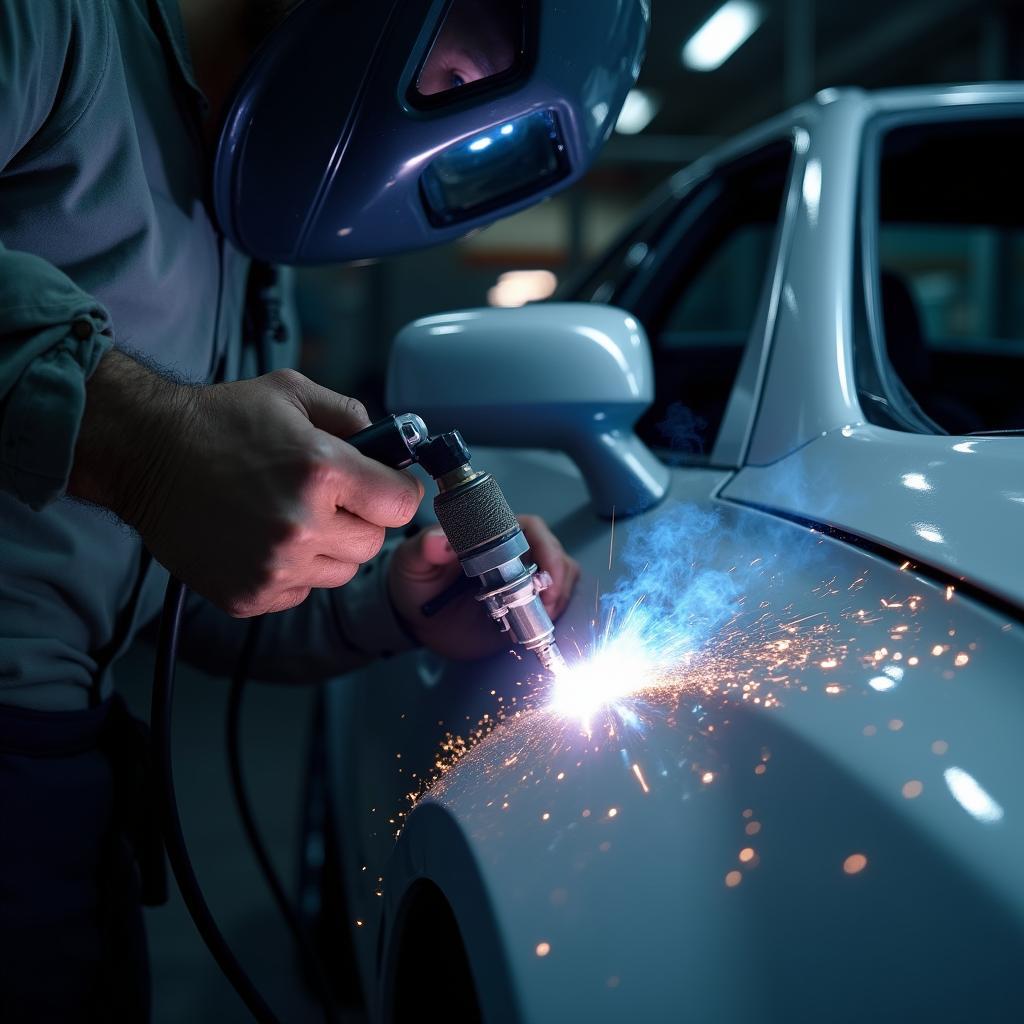When it comes to car bodywork repairs, the thickness of the metal and the welding technique used are crucial factors in determining the strength and longevity of the repair. One common question that arises is, “How thick does car bodywork need to be for MIG welding?” This comprehensive guide delves into the specifics of car bodywork mm thick repair using MIG welding, providing you with the knowledge to make informed decisions about your vehicle repairs.
Understanding Car Bodywork Thickness
The thickness of car bodywork, typically measured in millimeters (mm), varies depending on the make, model, and year of the vehicle, as well as the specific panel being repaired. Generally, car body panels range from 0.6 mm to 1.2 mm thick.
- Thinner panels (0.6 mm – 0.8 mm): Often found on doors, hoods, and trunk lids.
- Thicker panels (0.9 mm – 1.2 mm): Typically used for structural components like frame rails and pillars.
Knowing the thickness of the metal is essential for selecting the appropriate welding wire, setting the correct welding parameters, and ensuring a strong, lasting repair.
MIG Welding for Car Bodywork Repair
MIG (Metal Inert Gas) welding, also known as Gas Metal Arc Welding (GMAW), is a popular choice for car bodywork repair due to its versatility and ease of use. It involves feeding a continuous wire electrode through a welding gun, while an inert gas (usually argon or CO2) shields the weld pool from atmospheric contamination.
Advantages of MIG Welding for Car Bodywork:
- High-quality welds: MIG welding produces clean, strong welds with good penetration, crucial for structural integrity.
- Fast welding speeds: The continuous wire feed allows for faster welding compared to other methods, speeding up repair time.
- Versatility: MIG welding can be used on a variety of metal thicknesses and types commonly found in car bodywork.
- Ease of use: MIG welding is relatively easy to learn and operate, making it suitable for both professionals and DIY enthusiasts.
Factors Affecting MIG Welding on Different Bodywork Thicknesses
- Metal Thickness: Thinner panels require lower heat input to prevent warping, while thicker panels need more heat for proper penetration.
- Welding Wire: The diameter and type of welding wire should match the metal thickness and type being welded.
- Gas Flow Rate: Proper gas shielding is crucial to prevent weld defects. The flow rate needs to be adjusted based on the welding current and the surrounding environment.
- Welding Technique: Maintaining a steady hand and consistent travel speed is essential for achieving a smooth, even weld bead.
Tips for Successful MIG Welding on Car Bodywork
- Cleanliness is Key: Thoroughly clean the area to be welded, removing any rust, paint, or contaminants that could weaken the weld.
- Proper Fit-Up: Ensure the pieces being welded fit together tightly to minimize the heat input required and prevent distortion.
- Practice Makes Perfect: Before welding on a visible area, practice on scrap metal to dial in the correct settings and technique.
Conclusion
MIG welding is a reliable and efficient method for repairing car bodywork of varying thicknesses. By understanding the factors involved and following the recommended tips, you can ensure a strong, long-lasting repair that restores your vehicle’s structural integrity and aesthetic appeal. Remember to consult with a qualified automotive professional for any complex repairs or if you are unsure about any aspect of the process.



